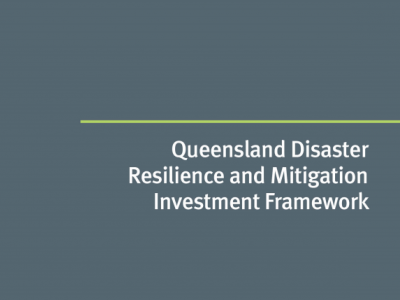Investment Resilience: Navigating Market Uncertainty
What is Investing in Resilience?
 |
| resilience queensland investing disaster framework |
Investing in resilience is the act of allocating resources, both financial and human, to mitigate the potential impacts of disasters and improve the ability of a community or organization to withstand and recover from such events. It involves implementing measures and strategies to reduce vulnerabilities and enhance preparedness, response, and recovery capacities.
Tips For Investing in Resilience:
- 1. Assess risks and vulnerabilities: Conduct a comprehensive assessment of the risks and vulnerabilities in your community, organization, or infrastructure. Identify the areas that are most susceptible to various hazards and prioritize them for resilience investments.
- 2. Develop a resilience plan: Create a detailed plan that outlines the specific goals, strategies, and actions needed to enhance resilience. Consider various scenarios and develop appropriate measures to address them.
- 3. Collaborate with stakeholders: Engage with community members, government agencies, businesses, and other stakeholders in the resilience planning and implementation process. Foster partnerships and collaboration to maximize resources and expertise.
- 4. Invest in infrastructure improvements: Identify critical infrastructure systems and invest in their upgrades and enhancements to withstand and recover from disasters. This may include improving building codes, strengthening bridges, implementing flood prevention measures, or enhancing communication networks.
- 5. Enhance emergency preparedness: Develop and implement effective emergency response plans and protocols. Conduct drills and exercises to test the readiness of the community or organization to respond to different disaster scenarios.
- 6. Build social and community resilience: Invest in programs and initiatives that strengthen social cohesion, community engagement, and individual preparedness. This can include education campaigns, training programs, and community-building activities.
- 7. Incorporate nature-based solutions: Explore nature-based solutions, such as green infrastructure and ecosystem restoration, to enhance resilience. These approaches can provide multiple benefits, including flood mitigation, climate regulation, and biodiversity conservation.
- 8. Monitor and evaluate progress: Regularly monitor and evaluate the effectiveness of resilience investments. Adjust strategies and actions as needed based on lessons learned and emerging risks.
Recommendation:
Investing in resilience is crucial for building sustainable and thriving communities. By taking proactive measures to identify and address vulnerabilities, communities and organizations can reduce the potential impacts of disasters and enhance their ability to recover. It is essential to allocate resources and collaborate with various stakeholders to effectively implement resilience strategies. Furthermore, continuously monitoring and evaluating progress can help identify areas for improvement and ensure that investments are targeted and impactful.
Listicle of Benefits from Investing in Resilience:
- Enhanced public safety and protection
- Reduced economic losses from disasters
- Improved infrastructure and systems
- Increased community cohesion and social resilience
- Enhanced environmental sustainability
- Improved public health and well-being
- Increased adaptive capacity to climate change
- Enhanced reputation and attractiveness for investment
Question & Answer:
Q: What are some challenges in investing in resilience?
A: Some challenges in investing in resilience include limited funding availability, competing priorities, and the complexity of assessing and managing multiple risks. Additionally, building consensus among stakeholders and navigating various regulatory and governance frameworks can pose challenges.
Q: How can individuals contribute to building resilience?
A: Individuals can contribute to building resilience by being prepared for emergencies, participating in community initiatives and training programs, adopting sustainable practices, and advocating for resilient policies and investments at the local and national levels.
Q: Why is investing in resilience important for businesses?
A: Investing in resilience is important for businesses as it helps protect their assets, operations, and reputation. It can reduce the potential for business interruption, improve supply chain resilience, and enhance the ability to recover and adapt to disruptions, thereby supporting long-term sustainability and profitability.
Summary:
Investing in resilience is essential for communities and organizations to prepare for and recover from disasters. By allocating resources, developing resilience plans, collaborating with stakeholders, and investing in infrastructure improvements, emergency preparedness, and social resilience, communities can enhance their ability to withstand and adapt to various hazards. Nature-based solutions and continuous monitoring and evaluation further strengthen resilience efforts. Investing in resilience brings numerous benefits, including public safety, reduced economic losses, improved infrastructure, and increased adaptive capacity to climate change. Despite challenges, resilience investments are crucial for building sustainable and thriving communities.
Post a Comment for "Investment Resilience: Navigating Market Uncertainty"